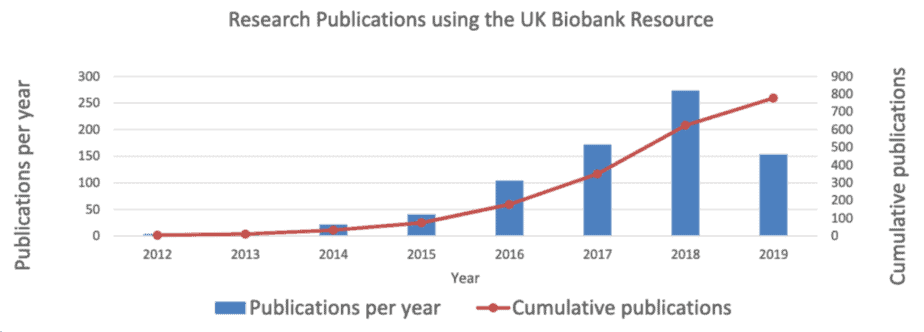More than 15 years ago, the Human Genome Project produced a single human genome at a cost of over $3 billion. Since then, exponentially decreasing costs have enabled researchers to sequence the genomes of hundreds of thousands of people. Today, national governments across the globe are initiating large scale population genomics projects to gain insights that might help improve healthcare.
In the United States, the National Institute of Health’s All Of Us Research Program is collecting data on at least one million Americans to build a unique database for precision medicine and genomics research. Across the pond, the UK BioBank recruited 500,000 people to study serious diseases combining medical records, imaging data, and genetics.
Dozens of other examples exist on a variety of scales, including Finland’s FinnGen study, the GenomeAsia 100K consortium that focuses on precision medicine in the Asian population, and the Genomics Health Futures Mission investment into Australian genomics research.
Exceeding expectations
The value of these initiatives is proving to be extraordinary. Researchers have already achieved much using the UK Biobank – the number of scientific publications utilizing the resource is rapidly increasing year after year (Figure 1).

Figure 1. The number of publications per year that have used the UK Biobank resource as of June 2019.
For example, earlier this year researchers using data from the UK Biobank demonstrated an association between a healthy lifestyle and a lower risk of dementia – insight that might be used to combat the growing incidence of dementia in our aging society.
With the myriad population genomics and sequencing projects underway worldwide, the UK Biobank is only the tip of the iceberg. Decreasing costs and improved technology are driving genomics research, enabling a better understanding of diseases and increasingly enabling prevention.
The best of both worlds
The above breakdown naively considers only government initiatives – direct-to-consumer genetic testing companies like 23andMe and AncestryDNA have much larger databases than any existing research project. And at the time of writing, these figures are staggering – AncestryDNA claims to have DNA-tested over 15 million people, while 23andMe cites over 10 million customers.
Government projects come with major expenses – complicated administrative operations, expensive processes, and general inefficiency. Direct to consumer genetic testing cuts through much of this by providing easy, affordable access to genetic testing technologies which enables rapidly growing databases of genetic information.
At Nebula Genomics we seek to combine the best aspects of government-sponsored population genomic initiatives with the advantages of direct-to-consumer genetic testing. In contrast to most personal genomics companies, we do not seek to monetize our customers’ data. Instead, we are hyper-focused on protecting the privacy of their genetic information and enabling them to control how their data is shared with researchers. Like most population genomics projects, we use next-generation DNA sequencing technology that generates orders of magnitude more data than the technologies used by most direct-to-consumer genetic testing companies. Combine this with the efficiency of a start-up, and the result is a genomic database that strikes an ideal balance between reliable government-sponsored non-profit projects and a commercial genomic database that is growing at a breakneck pace.
Consumers first, Researchers second
Our goal is to create a resource for researchers that can help advance medicine. However, to us, it is even more important to empower our users to benefit from personal genomics. Nebula is here to help you understand your genome. We give our users access to the latest genetic testing technologies and cutting edge genetic discoveries while ensuring affordability and privacy. You can upload your existing 23andMe or AncestryDNA files today, or order our whole-genome sequencing and begin exploring your own blueprints.